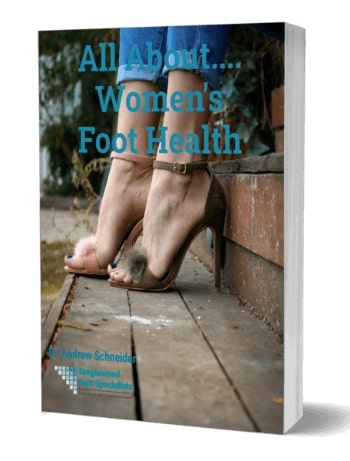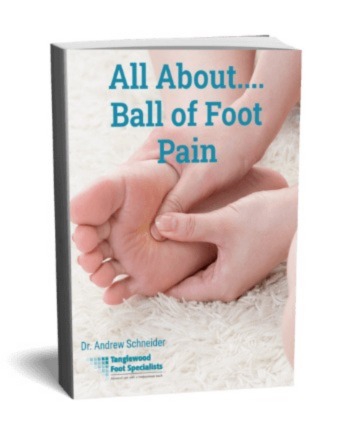Here at our Houston podiatry practice, we've spent years explaining why high heels are bad for your feet. So, by now, we hope you reserve high-heel wearing for special occasions. And, even at those times, that you limit heel height to three inches or less. Can we all agree on that practice? Great! Now, let's move on to the other shoes we want you to avoid!
The 6 Most Surprisingly Bad-For-You Shoes
Read on for our list of bad-for-you shoe styles, listed in no special order, but all worthy of limited wear only. Especially the last one. We really, really can't abide anyone with good sense (or, basically, taste) rocking that style.
SHOES THAT ARE JUST TOO CHEAP
You know that cure pair of shoes you spied online? The one with the too-good-to-be-true price point? Don't fall for that rock bottom sticker price: you will pay for it in the end. In fact, that's just what happened to Leanne Marley, whose $12 ankle boots from Temu sliced through her foot with a razor-sharp inner eyelet, leaving her to deal with more than $2600 in medical bills. In short, if you go too cheap on footwear, you will ultimately pay a higher price, whether the story ends in true disaster like this one, or your feet just hurt a lot due to the shoes' poor construction and lack of support.
BALLET FLATS
Kourtney Kardashian just revealed that she hurt her feet while wearing ballet flats for extended time periods. Of course, some ballet flats are better than others, but you do have to watch for a proper fit in this shoe style. Many of these shoes have shallow or tight toe boxes. That can pinch your toes together, causing toenail trauma or corns due to pressure. Also, beware of flats with absolutely no heel. Wearing shoes with extremely thin soles can up your risk for plantar fasciitis.
SLIDES ![These slides may be pretty, but they are bad for your feet!]()
We know, slides are cool and fairly comfortable. But, when it comes to your foot health, they are problematic for two reasons:
- Your feet aren’t kept in place by a front or back end. That forces your toes to grip and keep the shoes in place. Now, this gripping can lead to foot pain at first. But, with frequent wearing, it may even change the natural shape and growth of your toes. This could allowing a condition known as hammertoes to set in. (Please note this problem is also common among women who wear high heels. And flip flops, as you'll see below.)
- Slides that are flat are also a problem because they provide no arch support. Without arch support, your natural arch may collapse over time. This pulls your Achilles tendon. So it may cause shin splints, heel pain and/or tendinitis.
Want a comfier slide solution? Switch to cloud slides, made famous on TikTok and on Gal Gadot's feet. They have a slightly higher heel height. Plus, they have larger, more secure foot straps. That means the shoes stay in place better. And your feet don't have to grip as hard to stop them from sliding. Still, they don't have a back. So they're not as secure as other shoes. Meaning they're still not my favorite.
SOCK SNEAKERS
Sock sneakers are a major problem. They're shaped like athletic shoes, so these babies trick us into a false sense of security. But if you run when wearing sock sneakers, you'll have no support whatsoever. And do you know what that kind of false security leads to? Injuries like ankle sprains and strains, along with the usual suspects like foot pain and inflammation.
Flip FLOPS
You may be surprised to learn that podiatrists hate flip-flops even more than stilettos. Here’s why:
- Flip-flops offer no protection—it’s just your foot, open to the elements, with a few pieces of rubber in between you and the harsh world. This leaves you open to cuts, bruises and abrasions. At least high heels cover up more of your foot.
- Flip-flops have no shape—Even if the arch of a high-heeled shoe is too high, at least it exists. Because they are completely flat, flip-flops can cause your arch to drop, leading to heel pain and plantar fasciitis.
![flip flops in a row]()
- Like slides, flat flip-flops are a big problem. If you usually wear a heeled shoe, wearing a super flat one can stretch out your calf muscles. This strains the Achilles tendon and leads to the inflammation of tendinitis. Heels don’t have that issue, but they can cause your tendons to shorten. And that makes you even more susceptible to tendinitis when you switch to a shoe with a lower heel.
- Again, like slides, flip-flops slip—Because all that keeps these shoes on is a thong, they are likely to slip and move around on you, possibly causing tripping injuries like ankle sprains. While high-heels put you at risk of these problems because they leave you less stable, they don’t fall off nearly as often as flip-flops do.
- Pairs that have a thong shape leave your toes gripping to keep them in place. Over time, that can damage your toe joints and leave you with hammertoes. And that's why I say, if you wear flip flops to the pool or beach, don't spend more than two hours wearing these shoes on any one day.
CROCS (ESPECIALLY WITH HEELS)
We have a love-hate relationship with Crocs. Some object to these rubber shoes because they're hideous. More recently, people have noticed that wearing Crocs makes their feet grow larger...by as much as an entire shoe size, in some cases! (That seems to be true, and has to do with the lesser arch support in these shoes that can let your arch collapse.) Now, we covered that concern with earlier shoe styles. But what we're most concerned about with Crocs, specifically, is that you'll wear them everywhere. Why? They're comfy, but aren’t actually good for your feet (little arch support, prone to rubbing and corns/blisters…the list goes on and on.)
But we got new reasons to rail against Crocs when they reintroduced high-heels to some of their designs! So, those shoes have all the problems associated with traditional Croc styles and all the problems associated with high heels (think: bunions, hammertoes and instability just to name a few!)
But wait, there’s still more cause for worry: let’s remember that, like the rest of the Croc, the heels are made of rubber. Rubber bends. Women are already less stable when their bodies are tilted at an angle as a result of an elevated shoe heel, and now we’re suggesting that the heel should be constructed from a material that bends and twists. Meaning that heel is all-too-likely to get bent out of shape, leading to trips, slips and, more likely than not, an ankle sprain or two.
So, leaving aside all fashion objections, we'd strongly advise against including a pair of the new stiletto Crocs in your wardrobe.
All right guys, if you've stuck with us this long, especially if you’ve also joined the “no high-heels” bandwagon, we're hoping you’ll consider ditching the other shoes discussed in this post. After all, we're not here to crush all your dreams of fashionable footwear. (Especially trendy shoes that are actually hideous.) Our only end game in all of this is to help your feet look and feel their best. Isn’t that something you can get on board with as well?
As always, you could wear the perfect shoes and still end up with foot pain. No need to suffer! Contact Houston podiatrist Dr. Andrew Schneider to schedule an immediate appointment. Together we'll keep you active and wearing the shoes you love.























